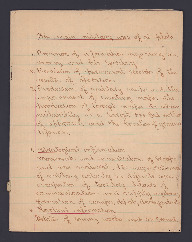Aerial Photography Notes
Title
Aerial Photography Notes
Description
Notes kept by JH Bird during his training.
Creator
Coverage
Language
Format
Five handwritten pages
Conforms To
Publisher
Rights
This content is available under a CC BY-NC 4.0 International license (Creative Commons Attribution-NonCommercial 4.0). It has been published ‘as is’ and may contain inaccuracies or culturally inappropriate references that do not necessarily reflect the official policy or position of the University of Lincoln or the International Bomber Command Centre. For more information, visit https://creativecommons.org/licenses/by-nc/4.0/ and https://ibccdigitalarchive.lincoln.ac.uk/omeka/legal.
Identifier
MBirdJH184015-180215-10
Collection
Citation
JH Bird, “Aerial Photography Notes,” IBCC Digital Archive, accessed July 27, 2024, https://ibccdigitalarchive.lincoln.ac.uk/omeka/collections/document/40693.
Item Relations
This item has no relations.

